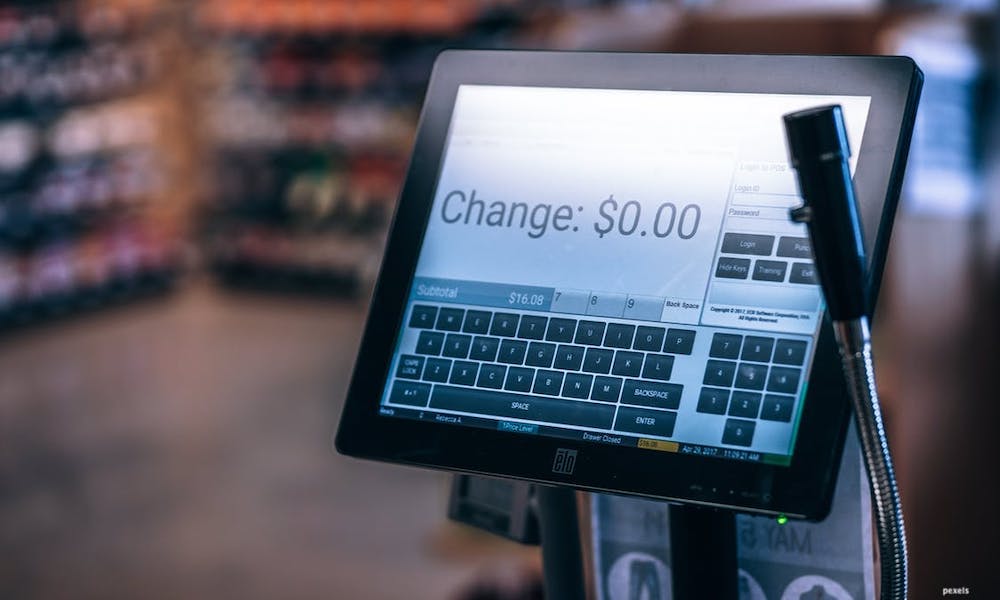Technology
4 Benefits of Using POS Systems to Manage Inventory

The retail industry has changed dramatically over the last decade. If you are still using an old-fashioned cash register to complete sales, you could be setting yourself up for failure. Businesses of all sizes are increasingly embracing modern POS systems and for a good reason.
These systems streamline the checkout process, improve customer experience, and make running a business a whole lot more efficient. They’re also powerful inventory management tools that make the once-dreaded task of “doing inventory” a relic of the past.
Once you learn how to use point of sale systems, keeping track of what you have in stock and making smart purchasing decisions becomes easier than ever before.
Manual inventory processes can be a nightmare. With a modern POS system, though, much of the process can be automated. Keep reading to learn more about the benefits of using POS systems to manage inventory.
Improved Accuracy
There is a lot of room for error when you do inventory manually. It takes a lot of time to conduct physical counts and ensure that the numbers you come up with match the numbers you have in your records. The process is exhausting, overwhelming, and can be downright frustrating, so it’s no surprise that mistakes commonly occur. Simply miscounting can result in your store running out of popular products which can, of course, cost your business money.
Managing your inventory using a POS system eliminates much of the possibility for error. Once it’s up and running, your software automatically keeps track of incoming merchandise and sales. It also accounts for product returns. Using POS software ensures much greater accuracy and helps you avoid potentially costly mistakes.
Loss Prevention
Using an automated inventory system can help you avoid employee theft which is, sadly, a major source of lost revenue in the retail industry. When things are kept track of automatically, it is much more difficult for dishonest employees to “fudge” numbers to hide their illegal activities.
When you use a POS system to manage your inventory, the numbers are updated instantly as changes occur. These real-time inventory updates lower the risk of shrink because the inflow and outflow of inventory are both closely tied to transactions and deliveries. When a change in stock occurs, it can be attributed to a specific event. When a shipment comes in, or a customer returns a product, the number goes up. When a product is sold, the number goes down. If a change occurs that is not associated with a known event, it’s likely unauthorized. By providing updates in real-time, a POS system makes it easy for you (or a law enforcement official) to determine precisely when an unauthorized or unexplained transaction occurred and track down who was on the clock at the time.
Greater Forecasting Ability
One of the most challenging things about buying stock for a retail store is knowing how much to buy. If you purchase too little, you risk running out and losing out on sales. This can result in a poor customer experience that makes some people decide to stop shopping at your store. If you buy too much inventory, though, you could end up with a bunch of unsold merchandise cluttering up your storeroom.
When you use a POS system to manage your inventory, you will be able to see precisely how well certain products sell. You’ll be able to monitor your best sellers and make informed decisions regarding how much inventory you need to have on hand. Your POS software may even enable you to automatically order more stock when your list drops below a certain level.
You can also use your system to forecast seasonal trends. With this information, you can make smart decisions when stocking up on items that tend to sell well at certain times of the year. While you can’t actually look into the future to see what customers will be buying and when you can use a sound POS system to accurately forecast trends and invest in inventory wisely.
Enhanced Efficiency Across Multiple Channels
If you are like many small business owners, you don’t have just one brick and mortar store where you sell your products. You probably have more locations and/or sell your products online. With the right POS system, you can seamlessly sync data from all of your physical locations as well as your e-commerce platform. This enables you to monitor inventory for all of your locations in one place. If you have multiple stores, your employees can check other stores to see if products are in stock.
You can also use a POS system to ensure consistency across all locations. Rather than manually checking prices at multiple stores, you can set them all using your POS software. You can also use the software to set promotional prices and discounts across all of your locations.
Since these systems are often cloud-based, you can access and update the data from virtually anywhere. As long as you have an Internet connection, you can keep an eye on your inventory and other important data even when you are not at work.
Conclusion
Keeping track of inventory is a challenge for many retail business owners. Whether you are running a small shop or a large department store, knowing what you have in stock at all times is crucial. Manual inventory tracking methods are time-consuming, frustrating, and often inaccurate. By upgrading to a modern POS system, it’s possible to automate many of your inventory tracking processes.
Using POS systems to manage inventory also helps you make informed decisions, forecast buying trends, and even prevent employee theft. There are many different points of sale systems on the market, all of which have their own unique features and capabilities. If you own a retail store, look for one that allows you to keep track of and manage inventory. With the right system in place, you’ll be able to waste less time worrying about the list and devote more time to grow your business.









